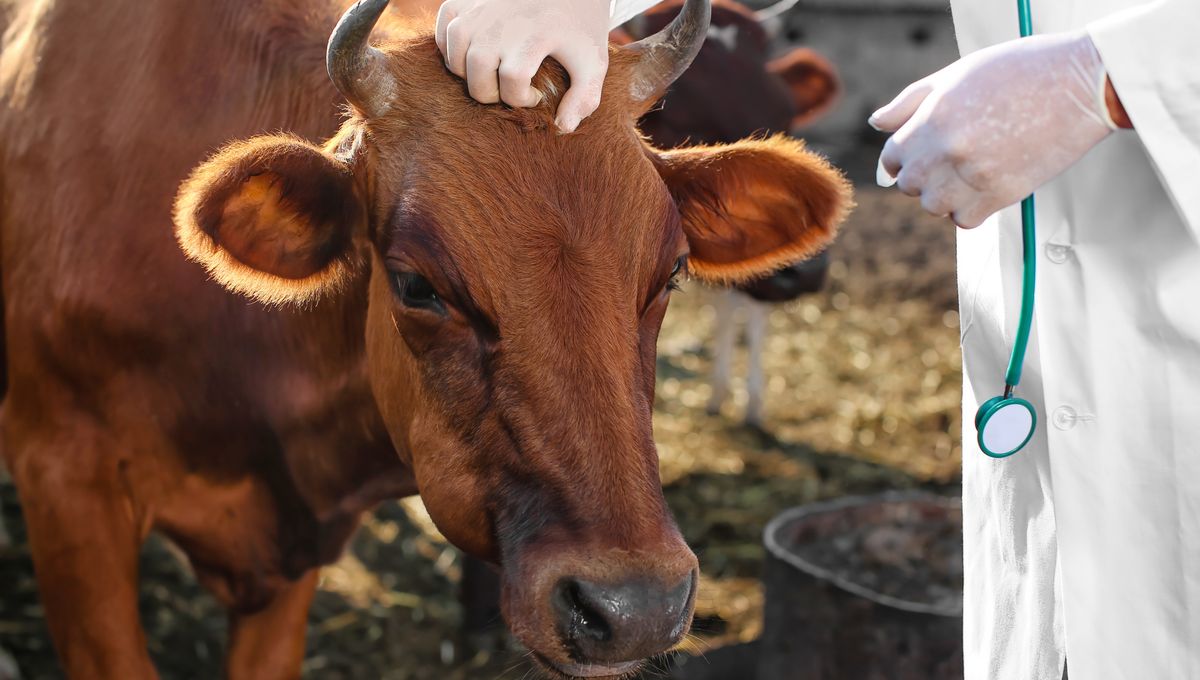
The current human case count of H5N1 influenza in the US could be an underestimate, according to a new study from the Centers for Disease Control and Prevention (CDC). After testing 150 veterinarians, the researchers found three with antibodies to H5N1, suggesting they had been infected recently. However, none had reported any symptoms, and one was from a state where no outbreaks had previously been reported in cattle.
ADVERTISEMENT GO AD FREE
There’s another concerning side note to this tale: the New York Times reports that the study, published in the CDC’s own journal, was originally going to come out several weeks ago, but was delayed after the pause on public communications instituted by the Trump administration.
The ongoing outbreak of genotype B3.13 of the H5N1 avian flu virus in dairy cows was first detected in March 2024. The first human cases, in farm workers, followed shortly afterward. Official figures at time of writing have us up to 68 human cases.
Fortunately, most people have experienced only mild symptoms. However, one death has so far been reported in Louisiana. That was put down to a slightly different genotype of the virus, D1.1, which was recently detected in dairy cows in Nevada following a second spillover event from birds into mammals.
The vets sampled for this study all work directly with cattle and thus are at far greater risk of exposure than the average person. Of the three who tested positive, none had worked with cows known to be affected with H5N1. One had worked with H5N1-positive poultry; two practiced in states that are known to have seen outbreaks in cattle.
However, the mystery comes from the one vet who only reported providing care to dairy cows in Georgia, and non-dairy cows in South Carolina. Neither state had previously reported any H5N1 outbreaks in cattle, though it’s possible some infections had gone unnoticed.
“It’s very difficult to control all of those different species”
As alarming as this may be to read about, none of it has come as a huge shock to infectious disease experts. There’s very high circulation of the virus in wild and domestic bird populations in the US right now, and adding infections in cattle into the mix means the spread is harder to contain than ever before.
ADVERTISEMENT GO AD FREE
“We always struggle to prevent the wild bird-poultry interface. It’s very difficult to control all of those different species,” Dr Carol Cardona, Pomeroy chair in avian health at the University of Minnesota, said in a briefing for SciLine.
As well as cows and humans, this virus has clearly established its ability to transfer into numerous other mammals.
“I think we know very little about what’s happening with the peridomestic animals,” Cardona added. “So, skunks, raccoons, rabbits, they’ve all been experimentally shown to get H5 influenza and be able to transmit it. In addition, we’ve seen many, many cases in foxes around the country. And so, we’ve seen it in bears. We’ve seen it in all kinds of species.”
Cardona said that one area of particular concern was domestic pets, particularly cats. We know that they’re susceptible to H5N1 after outbreaks in farm cats and domestic cats exposed via contaminated raw food. If it becomes clear that spread from cats to humans is a big factor in transmission, that immediately opens up the pool of at-risk people far beyond those who regularly come into contact with cows and poultry.
ADVERTISEMENT GO AD FREE
The fear born out of this latest study is that our current surveillance mechanisms may not be doing a great job of tracking these human cases.
“We do not know the extent of this outbreak in the US. There are clearly infections happening that we’re missing,” Emory University virologist Seema Lakdawala told the New York Times.
The need for better monitoring was echoed in the CDC’s conclusion to the study: “These findings suggest the possible benefit of systematic surveillance for rapid identification of HPAI A(H5) virus in dairy cattle, milk, and humans who are exposed to cattle to ensure appropriate hazard assessments.”
As the situation continues to develop, it’s important to remember that if this virus did reach pandemic levels, it would not be a carbon copy of the situation we saw with COVID-19.
ADVERTISEMENT GO AD FREE
“We’re in a very different spot with avian flu,” Dr Robert Murphy, executive director of the Robert J. Havey Institute for Global Health at Northwestern University, told IFLScience.
“We [have] to support the public health people that are working on the vaccines, better treatments and better surveillance.”
The study is published in Morbidity and Mortality Weekly Report.
Source Link: H5N1 Bird Flu Spreading Silently In US As CDC Data Reveals Unknown Infections In Vets